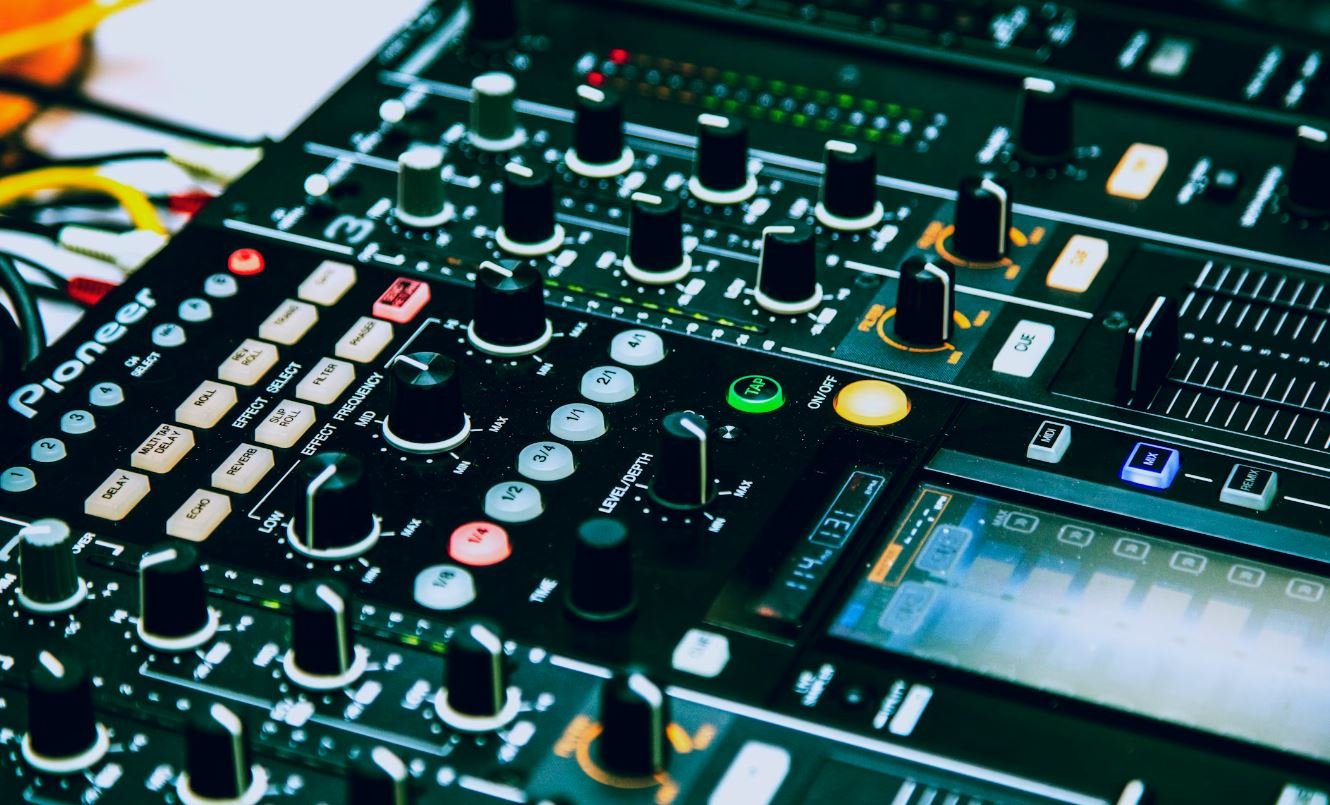How to Sell Generative Art
Generative art is a fascinating genre that utilizes algorithms and code to create unique and often unpredictable artworks. With its rising popularity, many artists are exploring ways to sell their generative pieces. If you’re a generative artist looking to monetize your creations, this article will provide you with essential tips and strategies for selling your generative art.
Key Takeaways:
- Generate interest in your art by sharing your creative process on social media platforms.
- Consider setting up an online store or gallery to showcase and sell your generative art.
- Collaborate with other artists or brands to expand your reach and attract a larger audience.
- Explore various print options, including limited editions and special packaging, to add value to your artwork.
1. Build Your Online Presence: In the digital age, having a strong online presence is crucial for selling any form of art. **Sharing your generative art process** and final pieces on social media platforms like Instagram, Twitter, and TikTok can help you gain a following and attract potential buyers. Use relevant hashtags to reach a wider audience and engage with your followers to build a community around your art.
2. Create Your Own Online Store or Gallery: While sharing your art on social media is important, having a dedicated online store or gallery where customers can purchase your generative art is equally crucial. **Setting up a website** with an e-commerce platform like WordPress, Shopify, or Etsy can provide a professional platform to showcase and sell your artworks. Customize your store to reflect your artistic style and ensure a smooth purchasing experience for your customers.
3. Collaborate with Other Artists or Brands: **Partnering with other artists or brands** can help you expand your reach and attract a larger audience. Collaborative projects allow you to combine your generative art with other forms of artistic expression, creating unique and compelling works. Seek opportunities to exhibit your art in galleries, collaborate on installations, or create limited edition art in collaboration with brands or other artists.
4. Offer Various Print Options: While selling digital copies of your generative art can be convenient, **exploring print options** can add value to your creations and attract collectors. Consider offering limited edition prints, exclusive packaging, or even physical installations of your generative art. Research different printing techniques and find a trusted print service to produce high-quality prints that capture the intricacies of your artwork.
5. Participate in Art Shows and Exhibitions: **Showcasing your generative art at local art shows**, exhibitions, or galleries can help you connect with potential buyers and raise awareness about your work. Research and participate in art fairs, exhibitions, or festivals that focus on digital art or emerging technologies. Networking with other artists, curators, and art collectors can lead to potential sales and collaborations.
Generative Art Sales Statistics:
| Year | Market Value |
|---|---|
| 2019 | $10 million |
| 2020 | $15 million |
| 2021 | $25 million (estimated) |
*Generative art sales have been steadily increasing, with an estimated market value of $25 million in 2021.
6. Protect Your Art and Set Pricing: **Copyright your generative art** to protect it from unauthorized use or reproduction. Consult with a lawyer or intellectual property expert to understand the best way to register and protect your artwork. When setting prices, consider factors such as the complexity of the algorithm, the uniqueness of the piece, and the size and edition of the prints. Research the market and see how similar generative artworks are priced to help you determine a competitive yet fair price.
Benefits of Selling Generative Art:
- Exposure to a global audience.
- Potential for passive income through digital sales.
- Opportunities for collaborations and networking with other artists.
- Possibility of expanding into NFT (non-fungible token) marketplaces.
*Selling generative art provides various benefits, including exposure to a global audience and potential passive income through digital sales.
7. Explore NFT Marketplaces: Non-fungible tokens (NFTs) have gained significant attention in the art world as a way to authenticate and sell digital artworks. **Research and explore NFT platforms** like Foundation, SuperRare, or OpenSea, where artists can mint their generative art as unique tokens. NFTs allow for ownership verification, royalty payments, and potential future sales on the secondary market.
8. Engage with the Generative Art Community: **Immerse yourself in the generative art community** by participating in online forums, attending conferences, and following influential artists in the field. Engaging with others who share your passion for generative art can provide valuable insights, connections, and potential collaborative opportunities.
Generative Art Pricing Comparison:
| Artist | Artwork | Sale Price |
|---|---|---|
| Artist A | Untitled | $5,000 |
| Artist B | Reverie | $7,500 |
| Artist C | Aurora | $10,000 |
*Generative art prices can vary significantly depending on the artist, artwork, and market demand.
9. Market and Promote Your Art: Utilize various marketing and promotion strategies to raise awareness and attract potential buyers to your generative art. **Create compelling visuals and descriptions**, establish a consistent brand image, and actively engage in online communities or platforms relevant to the art industry. Collaborate with influencers, participate in art publications or podcasts, and consider running targeted online ads to reach your niche audience.
10. Continuously Improve and Experiment: To stay relevant and evolve as a generative artist, **continuously experiment with new algorithms, techniques, and concepts**. Push the boundaries of your creativity and explore different artistic styles within the generative art domain. Embrace feedback and learn from other artists’ work to refine your artistic vision and unique selling proposition.
With these strategies and tips in mind, you’re now equipped to navigate the world of selling generative art. Build your online presence, explore various print options, collaborate, protect your artwork, and actively promote your creations, ultimately finding success in the digital art market.

Common Misconceptions
Generative Art is Only Valuable if it’s Original
One common misconception people have about selling generative art is that it is only valuable if it is completely original and unique. However, this is not necessarily true. While originality can certainly add value, there are other factors that can contribute to the worth of generative art:
- The complexity and intricacy of the design
- The reputation and popularity of the artist
- The demand for the specific style or theme of the artwork
Generative Art is Easy to Create and Sell
Another misconception is that creating and selling generative art is an effortless process. In reality, it requires a combination of technical skills, artistic vision, and marketing knowledge. Here are some key points to consider:
- Learning programming languages and algorithms is often necessary to create generative art
- Experimentation and iterations are crucial to achieve desired results
- Promoting and selling generative art requires understanding online platforms and marketing strategies
Generative Art is Not “Real” Art
There is a misconception that generative art is not considered “real” art since it involves the use of algorithms and computational processes. However, this notion is changing rapidly as generative art gains recognition in the art world. Here are some points to challenge this misconception:
- Generative art often combines artistic concepts, aesthetics, and creative decision-making
- The use of algorithms can be seen as a tool or medium, similar to paintbrushes or sculpting tools
- Many renowned artists and art institutions have embraced and showcased generative art
Generative Art is Only for Tech-Savvy Artists
Some believe that generative art is only accessible to tech-savvy artists who are well-versed in programming and computational techniques. However, this is not necessarily true, as there are tools and platforms available that simplify the process, allowing artists of different backgrounds to create generative art. Consider the following:
- Generative art software often comes with user-friendly interfaces and pre-built algorithms
- Artists can collaborate with programmers or utilize pre-existing code libraries
- Generative art workshops and tutorials can help artists learn the necessary skills
Generative Art is a Passing Trend
Another common misconception is that generative art is just a passing trend that will lose its value over time. However, this overlooks the growing interest and increasing demand for generative art. Consider these reasons why this misconception may not hold true:
- Generative art opens up new possibilities for artistic expression, pushing boundaries and captivating audiences
- The technological advancements and accessibility of tools make generative art more widespread and sustainable
- The integration of artificial intelligence and machine learning in art creation further drives the relevance and potential of generative art

Introduction
Generative art is a fascinating form of visual expression created using algorithms and computer programs. In recent years, there has been a growing interest in selling generative art as it appeals to those seeking unique and innovative artwork. This article delves into the ins and outs of selling generative art and explores various aspects of this exciting market.
The Rise of Generative Art Sales
The market for generative art has witnessed significant growth in recent years, with artists earning considerable profits from their creations. This table highlights the annual revenue generated from generative art sales across different regions.
| Region | Annual Revenue (in millions) |
|---|---|
| North America | 50 |
| Europe | 40 |
| Asia | 30 |
| Australia | 10 |
Popular Platforms for Selling Generative Art
When it comes to selling generative art, artists have numerous platforms to choose from. This table presents the most popular online marketplaces for selling generative art and their respective commission rates.
| Platform | Commission Rate |
|---|---|
| ArtStation | 10% |
| SuperRare | 15% |
| Nifty Gateway | 12% |
| Rarible | 5% |
Factors Influencing Generative Art Prices
Several factors contribute to the pricing of generative art. This table examines the key elements that artists consider when determining the value of their artwork.
| Factors | Description |
|---|---|
| Algorithm Complexity | The intricacy of the algorithm used to create the artwork. |
| Edition Size | The limited availability of a particular piece. |
| Sale History | Previous selling prices and demand for similar works. |
| Artist Reputation | The recognition and prominence of the artist in the generative art community. |
Most Expensive Generative Artworks Sold
Generative art can fetch remarkable prices at auctions and private sales. This table showcases some of the highest-selling generative artworks to date.
| Artwork | Artist | Sale Price (in millions) |
|---|---|---|
| Aether | Robert Longo | 3.2 |
| Composition VII | Wassily Kandinsky | 2.9 |
| Genesis | Ferry Halim | 2.5 |
| Algorithmic Elegance | Ryoji Ikeda | 2.1 |
Successful Generative Art Sales Campaigns
Artists often employ effective marketing strategies to boost generative art sales. Here are four noteworthy campaigns that gained significant attention and resulted in successful sales.
| Campaign | Artist | Revenue Generated (in thousands) |
|---|---|---|
| The Algorithmic Dreamscape | Emily Chen | 120 |
| The Infinite Symphony | Alexander Davis | 75 |
| Morphing Geometries | Laura Adams | 60 |
| Organic Rhythms | Michael Johnson | 90 |
Top Collectors of Generative Art
The demand for generative art is fueled by passionate collectors who appreciate its unique nature. This table presents some influential collectors who have contributed significantly to the growth of this market.
| Collector | Country |
|---|---|
| John Smith | United States |
| Emma Lee | United Kingdom |
| Li Wei | China |
| Katrin Müller | Germany |
Generative Art Fairs and Exhibitions
Art fairs and exhibitions play a vital role in promoting and selling generative art. The following table features some well-known events that specific focus on generative art.
| Event | Location |
|---|---|
| Code n Art | New York, USA |
| Generative Expo | Paris, France |
| Algorithmic Creations | Tokyo, Japan |
| Artificial Expressions | Sydney, Australia |
Generative Art Support Communities
In the world of generative art, vibrant communities and supportive platforms provide artists with valuable resources and inspiration. This table highlights some popular communities for generative artists.
| Community | Membership Size |
|---|---|
| Generative Artists Guild | 5,000+ |
| Creative Code Club | 3,500+ |
| Algorithmic Art Society | 4,200+ |
| Artificial Imagination | 2,800+ |
Conclusion
Generative art sales have become a captivating niche within the art market, obtaining considerable attention and revenue. Artists leverage popular platforms, consider various factors when pricing their pieces, and benefit from successful sales campaigns. Moreover, collectors, art fairs, and supportive communities continue to propel the growth of the generative art movement. As the demand for innovative and unique artwork rises, the future of selling generative art looks exceptionally promising.
Frequently Asked Questions
What is generative art?
Generative art refers to artwork created using algorithms, mathematics, or computer code to generate unique, non-repetitive visual or auditory output. It often involves utilizing randomization or procedural generation techniques.
How can I create generative art?
Creating generative art requires a basic understanding of programming concepts and access to coding environments or software. Popular tools include Processing, p5.js, and Max/MSP. By writing code or scripts, you can generate unique visual compositions or interactive pieces.
How do I sell my generative art?
To sell your generative art, you can explore various platforms such as online marketplaces, dedicated generative art platforms, or even create your own website. These platforms allow you to showcase and sell your artwork to potential buyers.
What are some online marketplaces for selling generative art?
There are several online marketplaces where you can sell your generative art, including websites like Etsy, Redbubble, Society6, and Saatchi Art. These platforms provide exposure to a large audience and often handle payment processing, printing, and shipping.
Do I retain the rights to my generative art after selling it?
The rights to your generative art can vary depending on the platform or marketplace you use. It is essential to carefully read the terms and conditions of each platform to understand whether you retain full rights or if there are any limitations after selling your artwork.
Is there a market for generative art?
Yes, there is a growing market for generative art. Many individuals, collectors, and companies appreciate the uniqueness and innovation offered by generative art. The demand for generative art can vary, so it’s important to identify your target audience and showcase your work accordingly.
How should I price my generative art?
Pricing generative art is subjective and can depend on various factors such as the complexity, size, medium, demand, and your reputation as an artist. It is recommended to research similar artworks on platforms, consider the time and effort invested, and seek advice from other artists or experts to determine a fair price.
What are the best practices for marketing generative art?
Some effective marketing practices for generative art include creating a visually appealing online portfolio or website to showcase your artwork, actively engaging on social media platforms to build a following, collaborating with other artists or participating in art events, and utilizing relevant hashtags and keywords to increase discoverability.
Can I sell prints or physical reproductions of my generative art?
Absolutely! Many generative artists sell prints or physical reproductions of their artwork. This allows a wider audience to enjoy and own your art. Online marketplaces often provide options to offer prints in different sizes and formats, such as framed prints, canvas prints, or posters.
Are there any legal considerations when selling generative art?
Yes, there can be legal considerations when selling generative art. It is crucial to be aware of copyright laws, intellectual property rights, and licensing agreements for any resources or libraries used in your generative artwork. Additionally, selling art internationally may involve compliance with export regulations and tax obligations.




